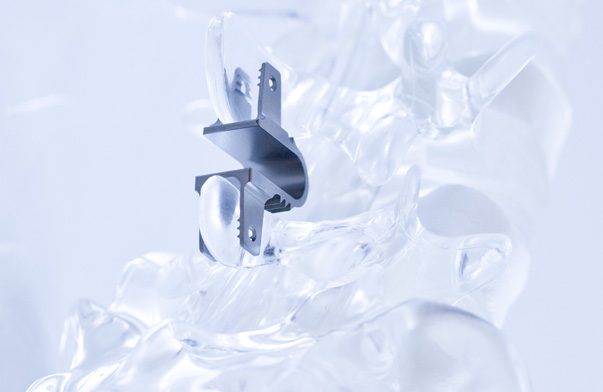Le U – The System for Dynamic Stabilization
The titanium implant is implanted after decompressing surgery of lumbar canal stenosis and also when the facet joints are arthrotic. The implant stabilizes the operated segment and preserves its flexibility. Patients quickly regain both their flexibility as well their stability.
The contentment of the patients after the operations and the simplicity of the surgical procedure are the main reasons for the success of Le U.

 Deutsch
Deutsch

